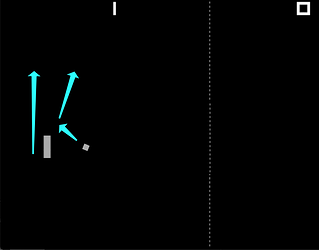Hi,
I’m implementing a typical ‘pong’ game.
I have the ball, that is “dynamic” obj, and the rackets, that was “static” obj.
All worked fine.
Now I would like to upgrade the bouncing effect on the rackets and I tried to works with the linearvelocity.
But the obj:getLinearVelocity() does’t works with “static” obj, so I changed it in “kinematic” the rackets. But also on this I receive 0 from function.
On “dynamic” obj my rackets goes around the screen impacting with the ball. Non nice!
Any suggestion ?
Thanks!
Renato


